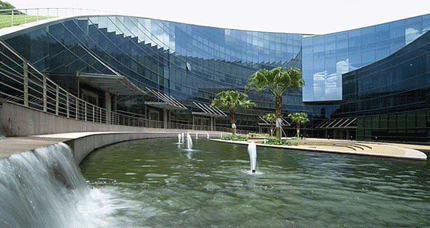1) Cost:
The cost of the building would affect its design. With less budget, materials would be of lower quality so as to fit in the budget. There would also be of lower sustainability, technology, and not as good site for building the building, which means that with less cost, most of the other factors would be affected.
2) Sustainability:
With sustainability, buildings would be able to last longer and continue functioning into the future without being forced into decline through exhaustion or overloading of the key resources on which that system depends. This means buildings and communities would have lower environmental impacts while enhancing health, productivity, community, and quality of life.
3) Building Technology:
Technology used for the building is important. It is partially based on aesthetics, and the rest has to consider things such as floor-to-floor height required to accommodate structural, mechanical, lighting, and ceiling systems in a cost- effective manner. This varies significantly from an apartment house to an office building to a research facility.
4) Site:
These factors include site size; configuration, ecological features, including vegetation, wildlife habitats, water elements, and drainage and accessibility to property.
5) Context and Climate:
Contextual factors include the nature of the surrounding natural and built elements. Existing patterns and characteristics can provide clues or starting points for approaching site development as well as the building design, influencing its configuration and use of materials and colors.
6) Client:
Some clients have a clear idea of a program, budget, and other project objectives, including the final appearance of the building. Others look to their architect to help them define the project objectives and to design a building that meets those objectives. In both cases the effectiveness of the relationship between client and architect is important in making and implementing design decisions throughout the project.
7) Community concern:
The design should be based on the target audience, or the people in that area, to meet what their needs are.
8) Codes and Regulation:
There has to be consideration in all designs to ensure important things such as safety of the people, and to plan for every aspect of the design and construction.
Tuesday, July 26, 2011
Tuesday, July 19, 2011
Design of a Recreational Centre
Clementi has an aging population, with more elderly people.
Target audience: Elderly people
Recreation centre:
-Table tennis tables
-Mahjong tables
-Gym(treadmills, bicycles which cannot move)
-Board games like chess, more towards traditional or olden games
-Provide classes such as sewing, knitting, etc. For them to pass time
-Television in area with many benches and tables for them to chat
-Rooftop garden(gardening)
-Function room for activities and classes
-Food stalls
Attracting people:
Provide elderly care such as when the other people in the house leaves for their activities, the elderly people can go there to pass their time, and maybe make some friends with the people there.
Architectural design:
-Dome shape, with a flat top, round base
-Lifts for elderly
-Automatic doors
-Reception desk
-Handicapped toilets
-Different floors are of different sizes
1st Floor:
2nd Floor:
3rd Floor:
4th Floor:
Done by Qi Ren, Jeremy, Matthew, Hakeem
Target audience: Elderly people
Recreation centre:
-Table tennis tables
-Mahjong tables
-Gym(treadmills, bicycles which cannot move)
-Board games like chess, more towards traditional or olden games
-Provide classes such as sewing, knitting, etc. For them to pass time
-Television in area with many benches and tables for them to chat
-Rooftop garden(gardening)
-Function room for activities and classes
-Food stalls
Attracting people:
Provide elderly care such as when the other people in the house leaves for their activities, the elderly people can go there to pass their time, and maybe make some friends with the people there.
Architectural design:
-Dome shape, with a flat top, round base
-Lifts for elderly
-Automatic doors
-Reception desk
-Handicapped toilets
-Different floors are of different sizes
1st Floor:

2nd Floor:

3rd Floor:

4th Floor:

Done by Qi Ren, Jeremy, Matthew, Hakeem
Tuesday, July 5, 2011
What makes a good architectural design
One example of good architectural design is the NTU School of Art, Design, and Media.
This building has a spectacular roof which blends with its surroundings as shown in the picture below. The exterior of the building is mostly glass, which allows people to look outside but unable to look inside. The roof, being sloped, will cause the rooms to be in different shapes and volumes to adapt to different needs. The great design would also let students there to learn more about design at the same time.


Sources: http://www.design-flute.com/2008/01/11/green-turfed-roofscape/
This building has a spectacular roof which blends with its surroundings as shown in the picture below. The exterior of the building is mostly glass, which allows people to look outside but unable to look inside. The roof, being sloped, will cause the rooms to be in different shapes and volumes to adapt to different needs. The great design would also let students there to learn more about design at the same time.


Sources: http://www.design-flute.com/2008/01/11/green-turfed-roofscape/
Subscribe to:
Posts (Atom)